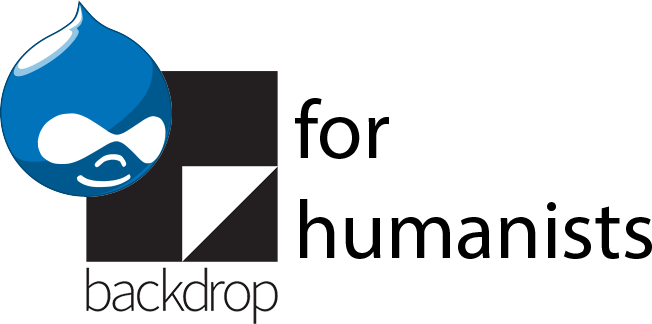Overview of important updates
The majority of Drupal for Humanists was written between January and May 2015. There's been a lot of changes to individual Drupal modules in the meantime, some of which affect the configuration described in the book. This page summarizes those changes, with links to more details in the affected chapters.
Chapter 2. Introducing Drupal
Drupal 8 was released two months after Drupal for Humanists was sent to the publisher, but as of its release date (November 2016), the section on Drupal 8 is still relevant. Module support is still fairly limited for Drupal 8, and the memory requirements for Drupal 8 to perform comparably to Drupal 7 are significantly higher. (In short, if you're using inexpensive shared hosting, expect it to run slowly.) Drupal 7 is still unequivocally the platform to choose when building a complex digital humanities project.
Chapter 4. Modules
As of Drupal 7.50, whenever you install a module via the Drupal UI, Drupal will spit out red error messages at you on the Modules page as you attempt to enable the newly-installed module. They look something like this, and the number varies module to module.

You can safely ignore these warnings, and you shouldn't see them again after you enable the module.
Chapter 6. Configuring content types and fields
Partial Date
There have been a lot of improvements to the Partial Date module, but as of November 2016, they're only available through the Agile Humanities Agency Github. Read more about updates to Partial Date.
Automatic Nodetitles
As of July 2016, this module has been abandoned by its developers in favor of Automatic Entity Label. A tutorial on how to configure it is forthcoming.
Media
The Media module finally has a full (green) release of the 7.x-2.x branch!
Chapter 7. Further data modeling and applied content type creation
An update to the Views TimelineJS module means that it's now possible to use the Partial Date module as a data source, and you no longer need to create a separate "Year" field using the date module for events.
Chapter 13. Advanced Views
See chapter 7; you can use a partial date field as the data source for a timeline using Views TimelineJS, as well as a timeline using Simple Timeline.
Chapter 19. Finishing and launching the example site
As of Panels 7.x-3.8, enabling the Views Content Pane module (along with Panels and Panel Nodes) may not be enough to make views selectable when you add content to a panel. If you don't see your views when you try to add content to a panel, go to Structure > Panels > Settings (/admin/structure/panels/settings) and make sure the box is checked next to "Make all views available as panes".
